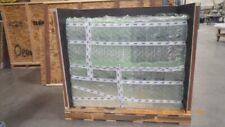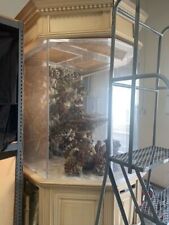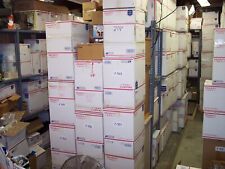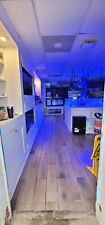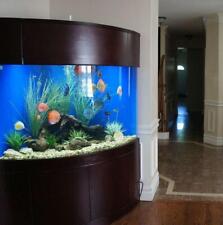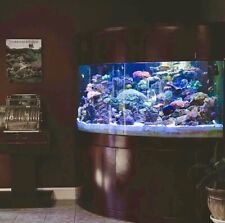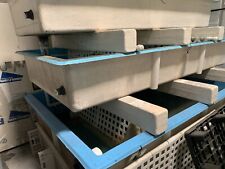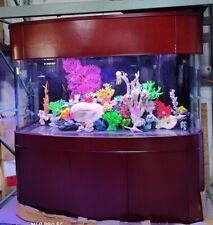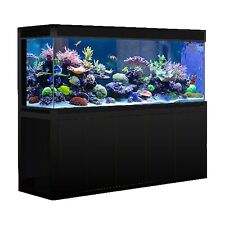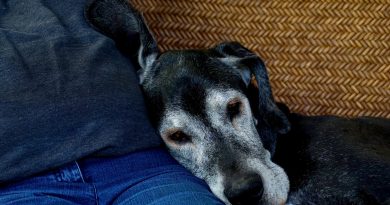Caring for the Older Cat

Water & Feeding
Cats need plenty of fresh, clean water. 60%-70% of their body weight is water. In the wild, they get most of their fluid requirements from prey. Cats fed on dry food require more drinking water than cats fed on canned foods. They are sensitive to the taste of water; some dislike the chlorine taint of tap-water so let tap water stand for a while, or use filtered or mineral water. Some cats dislike the smell of plastic so use glass or ceramic bowls. Rather than walk to his bowl, a dehydrated older cat may drink the closest available liquid e.g. cold tea or coffee; so place his water and food close to the cat’s resting place.
Cats are obligate carnivores. Their teeth and bowel are adapted to slicing and digesting meat. 75% of their diet should be meat. They cannot digest fruit, vegetables or cereal though these items can provide bulk in the diet. If you want your cat to be vegetarian then you must question your reasons for owning a creature whose entire body and whose behavior patterns are adapted to meat-eating and who evolved as a predator. It is ethically wrong to force a cat to be vegetarian diet just to fit in with an owner’s belief system. You should adopt a house-rabbit instead.
Older cats have different dietary needs to kittens or active, younger cats. His digestive system is less efficient and he requires several small, easily digested meals a day. In the UK, look for "complete" (means nutritionally balanced) on the label; "complementary" means a treat food. In the US, look for "complete and balanced product for maintenance" with a statement that it meets AAFCO (Association of American Feed Control Officials) requirements. The UK body regulating pet food is the PFMA (Pet Food Manufacturers Association). Waltham Nutrition Centre (UK) researchers consider that changes to the digestive system begin to take place around 7 years of age and that cats aged 7+ require food containing easily digested protein.
There are "life-stage" foods available for Older Cats and formulated to suit a less efficient digestive system or to combat obesity. Senior cat formulations provide easily digested protein, but are expensive and some cats dislike them. Unless your cat has problems with regular cat food, or is becoming obese, an ordinary complete and balanced formulation plus fresh drinking water is usually adequate. Rather than impulse-buy life stage foods, ask your vet if your cat really needs them. Don’t be emotionally blackmailed into buying an expensive product if your cat is healthy on regular brands of food.
In the US, some proteins are considered hypoallergenic e.g. lamb, rabbit, turkey or duck. This is not strictly true; those proteins are simply uncommon in many US cat food formulations and cats may not been exposed to them often enough to develop an allergy. In the UK, lamb, rabbit, turkey and duck are among the most common ingredients and just as likely to trigger an allergic reaction as beef or chicken. In the UK, venison may be used in hypoallergenic diets as it is rarely found in UK cat foods. Horsemeat and whalemeat would also be hypoallergenic for the same reason, but are taboo in Britain.
Cats enjoy a variety of tastes and textures: canned (UK: tinned) food, semi-moist pellets, dry food (UK: biscuit, US: kibble) and occasional treats of cooked meat, fish, egg or even a small amount of fruit or vegetable. Your vet will advise you on nutritional matters, but be aware that he may get commission for selling certain brands of non-prescription food in his clinic. Prescription diets are necessary to control diabetes, heart, liver or kidney disease, obesity, digestive or urinary problems or food intolerances. Cat food ingredients basically simulate mouse-in-a-can or mouse-in-a-biscuit. Your vet may recommend nutritional supplements for certain individuals. If your cat eats a balanced diet and has no digestion problems, supplements are unnecessary and could upset the balanced nature of the diet.
Many British cat nutritionists recommend canned foods for their better bulk (combats constipation) and high fluid content (for healthy kidneys). If you use canned food, clear away or refrigerate uneaten food or it becomes stale or fly-blown and may cause digestive upsets if eaten later. If you find canned food wasteful, buy smaller cans, foil trays or pouches. They are more expensive weight for weight, but may save money due to less waste. If the large cans are prescription foods, ask the vet if the product is available in small cans or biscuit form.
American cat nutritionists recommend dry foods but American cat magazines give frequent advice on combating constipation caused by these energy-dense, low-bulk foods. Many cats enjoy dry food and the crunchy texture helps keep teeth healthy. Cats which eat dry food require plentiful drinking water. Some dry foods are marketed as reducing stool bulk and odor.
This is entirely for your convenience (litter tray emptying) and can cause problems such as constipation since the cat’s bowel is designed to handle a certain amount of bulk. Cats on concentrated foods require smaller portions and often overeat because their stomach does not feel full. You may have to accustom your cat to canned food as he ages since a toothless cat often gulp down dry food which leads to indigestion, regurgitation or vomiting of undigested biscuit. Most dry foods can be softened with gravy and the old problem of dry food causing urinary tract disorders has been overcome with modern formulations.
Benefits and Negative Aspects of Each Food Type for Older Cats
| Food Type | Benefits | Negatives |
| Canned | Mimics prey texture/water content Bulk aids bowel action Bulk reduces likelihood of over-eating as stomach is full. Easy for toothless cats to eat Easy to mix medication with canned food Some owners dislike smell Strong smell appeal to cats with poor sense of smell |
Texture allows tartar build-up on teeth Spoils (goes off) rapidly Some premium varieties have dense or "gluey" texture; must mash them with gravy. |
| Dry | Convenient – does not spoil, can be left out all day Texture promotes healthy teeth by abrasive action Cat may overeat because stomach is not full Smell not offensive to owners Can be softened with gravy Reduces stool bulk/odor |
Low-bulk contributes to constipation Cannot mix medication with kibble Less smell, may not appeal to cat with poor sense of smell Toothless cats may gulp it down and suffer indigestion |
| Semi-dry | Available in sachets to "top-up" a meal | Spoils less rapidly (may just dry out) |
| Liquid | For invalid cats, easy to lap, nutritionally balanced. Useful for syringe/spoon-feeding Useful as treat or to mash with "gluey" textured foods |
Low bulk, high liquid content, should not be long-term diet |
| Dog Food | None for cat | Nutritionally unbalanced for cats. Long term use causes blindness, poor coat, eventually death |
| Baby Food | Useful treat to persuade cat to eat Not balance for cat’s nutritional needs |
Many contain onion as flavoring – toxic to cats. |
If you cat has problems without teeth, you can chop canned food to a manageable consistency. Some pate-consistency food can be mashed with gravy, tomato juice (from canned fish), sardine-oil or warm water. Dry food can be moistened with gravy. Liquid foods (e.g. Liquivite) are complete foods but can be used to soften biscuit. Meat-based baby food is a treat of ill or convalescent cats, but is not balanced for cat consumption and may contain onion in the ingredients. Onion is toxic to cats and causes Heinz body anemia.
Some cats need extra roughage in their diet to combat weight gain or constipation. Older bowels may become lazy and require more bulk to keep things working smoothly. Try mashing one or two teaspoons of bran, porridge oats, canned pumpkin, cooked rice, cooked pasta or cooked mashed potato into canned food. Some older cats also enjoy warm porridge or hot oat cereal on cold mornings, but this is not suitable for cats with lactose intolerance.
Your cat’s sense of smell deteriorates with age, causing poor appetite or faddiness. Strong smelling canned food may overcome this. Cats are good at manipulating their owners into serving favorite foods, which may not be what is balanced and best for it. Unless you enjoy preparing balanced gourmet meals for your cat (possible but time-consuming) resist being manipulated as this risks dietary imbalances.
Signs of poor diet include thin, dull coat, excessive shedding or dandruff, weight loss, vomiting, diarrhea, yellow teeth and mouth odor. A cat which wobbles as he walks is probably receiving too many calories for his level of activity. Any cat which has difficulty eating or has lost its appetite should be examined by a vet in case there is an underlying problem. A suddenly increased appetite, especially if coupled with weight loss or poor condition, also needs to be investigated.
Exercise & Claw-Trimming
Older cats becomes less agile as arthritis develops and muscles begin to atrophy and will reduce their physical activity. Moderate, regular play sessions promote muscle tone and suppleness, increase blood circulation, and help maintain bowel condition. During play watch out for labored breathing or rapid tiring that may suggest the cat has a disease; quit playing when the cat tires. It may be necessary to relocate food dishes and litter boxes for cats with advanced arthritis and muscle atrophy. If you have a garden, but it is to dangerous for the cat to go outdoors alone, try slow gentle walks (or long sit-downs on the grass!) using a harness and leash. A dose of fresh air can perk up a cat no end.
Older cats may not wear down their claws as quickly as before, so more frequent trimming is needed. They may not use scratching posts as frequently to remove the outer sheath of their claws. Check claws weekly and trim when necessary. Overgrown claws snag on carpets or furnishings, sometimes causing injury as the cat tries to pull free. Badly overgrown claws cause discomfort and problems with walking. A cat trims his back claws by chewing off the loose claw sheathes. A cat without teeth can’t do this so back claws also need attention.
Claw-trimming is not difficult, especially if the cat is docile. A vet can show you how to trim claws. An older cat’s claws also become more brittle and may not fully retract as the muscles become less efficient. A scratching post is still recommended (and helps to stretch and exercise leg muscles), although an older cat may use it less or its use will be less effective.
Grooming & Hairballs
Adult cats spend a third of their time grooming. This decreases as they grow older, less supple and less energetic. They need more help with grooming and keeping clean. Some only groom after meals or only groom easily accessible areas (face, chest). Senile cats may stop grooming entirely. Extremely old cats may pay little attention to their own hygiene, but appreciate it if you help keep them clean, comfortable and sweet smelling. If you have two companionable cats they may groom each other. As well as keeping the coat in good condition, grooming helps to establish a strong bond between cats and between cat and owner. Daily brushing can be relaxing and enjoyable quality time for both of you.
Brushing removes dead hairs from the coat and helps prevent matted fur. It stimulates blood circulation and sebaceous-gland secretions in the skin, making skin and coat healthier. A fine toothed comb removes skin parasites. The area under the tail sometimes needs a gentle wipe with a damp tissue or pet wipe. Few cats like having their belly combed; there is no need to press the point unless the belly fur becomes matted. While grooming your cat, check for unusual lumps, bumps, wounds or external parasites. Unusual or unexplained lumps or wounds should be examined by a vet for appropriate treatment. External parasites can be controlled by treating the cat and its environment with recommended pesticides.
Grooming reduces the formation of hair balls by removing loose fur before the cat swallows it during self-grooming. Hairballs can cause problems for an older cat because his stomach and bowel may become lazy and more easily obstructed. If he does not self-groom, his coat quickly develops mats. Cats use their teeth to "comb" out mats, so cats with painful, few or no teeth have problems in preventing mats. Daily brushing prevents shaving or clipping later on. Mats are commonest on the flanks, inside thighs, "armpits" and ruff (of longhairs). Mats containing cat litter or faces can form under the tail or on the back legs. Mat breaker combs are useful and may prevent the need for de-matting under anesthetic.
Longhaired elderly cats may become messy around the backside because they cannot do the necessary contortions to reach this area. Few cats like being combed in this area so you may want to trim the fur under the tail (britches) to stop faeces, cat litter and mud sticking to it. Cats rarely need to be bathed, but if he becomes very dirty a bath may be necessary. Most cat care books will tell you how to do he is completely dry before allowing it outdoors.
Hairballs (fur balls, trichobezoar- literally "hair-stone") cause vomiting. Cats swallow hair while grooming and this must come out of one end or the other! If it accumulates and doesn’t pass through with food, it is regurgitated in a sausage-shaped mass of compressed fur which is either gray or stained by food colorings from a recent meal ("red hairball syndrome". Cats sometimes eat grass to trigger hairball regurgitation. A hair ball too large to be regurgitated or excreted causes intestinal blockage. This is more common with cats fed on dried food which lacks fiber. He develops a swollen belly and either diarrhea or constipation depending on where the hairball is stuck. A laxative or fiber supplement may resolve the problem, but sometimes surgery is needed. If he is prone to hairballs, a higher fibre diet, non-digestible fat/oil (liquid paraffin, petroleum jelly) or mild laxative (Katalax or a hairball paste) may be needed in future.
Hairballs which pass through your cat may dangle from his anus because strands of fur in stool are attached to fragments of stool still inside the body. If these cannot be pulled free with very gentle pressure, you can snip the dangling stool free with scissors. This occasionally occurs with longhaired cats.
Dental Care
Older cats are susceptible to tartar build-up and oral diseases such as gingivitis (inflamed gums) and stomatitis (inflamed mouth lining). Some illnesses cause mouth or tongue ulcers. Signs of mouth problems include bad breath, drooling, yellow-brown tartar build-up on the teeth, pawing at the mouth (especially after eating) and poor appetite. Severe gum disease causes painful red and swollen gums, loose teeth and pus seeping from tooth sockets. Bacteria from infected gums can get into the bloodstream and cause other problems. Cats do not tolerate mouth pain well and may stop eating or grooming because the mouth is sore.
Try to check your cat’s teeth and gums regularly for signs of tartar or reddened gums and ask for a dental check up at vaccination time. Dental problems are more common in cats fed exclusively on soft foods. Dried food, fed as part of the cat’s diet, has an abrasive action on teeth and helps to keep them clean. There are also specially formulated cat treats (e.g. Pounce Tartar Control, Whiskas Dentabits) whose size, shape, texture and chewy consistency help clean the teeth as the cat bites into them. Australian vets recommend feeding raw chicken wings for their abrasive texture; claiming that the bone is not hazardous if it has not been cooked. In the wild, cats teeth are kept clean when biting into tough muscle meat, bone and biting through skin or rind of the prey. Some cats even chew on rough materials (fabric, tough leaves) to remove trapped particles in their teeth.
It is possible to slow down the loss of teeth by regular check-ups and teeth-cleaning but your cat’s teeth may eventually wear out regardless of diet. Some cats are genetically more prone to gum disease (as an auto-immune condition). When the teeth have gone, it may be hard for them to eat dried cat food. They swallow it whole and may suffer indigestion and vomiting. Most toothless cats manage very well on softer foods and many manage well on dried food with small biscuit size or even develop hardened gums which allow them to eat biscuit food.
It is possible to clean your cat’s teeth to remove plaque and prevent tartar build-up, but he needs to become accustomed to this when young. Preparations such as "Logic" toothpaste can be rubbed onto his teeth without requiring a brush. You could gently rub his teeth and gums with a piece of gauze or veterinary toothbrush soaked in special mouth rinse or coated with cat-specific paste. Human toothpaste is not suitable – he won’t like the taste, it makes him drool and may be toxic if swallowed. If your cat has a build-up of tartar, get the vet to de-scale his teeth under anesthetic and remove any teeth which are beyond saving. Afterwards, establish a regular teeth-cleaning routine. This requires patience if he has never had his teeth brushed or cleaned before!
General anesthesia is riskier in older cats, but this should not prevent any dental surgery. Modern anesthetics are becoming ever safer and modern vet clinics are well-equipped and have trained staff. Surgery should be carried out when your cat is well – sooner rather than later as loss of appetite cause additional problems. Prompt action at the first signs of mouth problems could save your cat’s teeth and prevent gum infections.
After a dental operation, your cat needs softer food while his gums heal. I have known cats tuck into their favorite dried food within a few hours of going home which shows how much better they feel once painful teeth have gone. Others remain miserable for a few days as the gums are sore and they must be persuaded to eat. Your vet may prescribe antibiotics or painkillers and will explain how often to give them. Your cat will need a post-op check up to ensure his gums are healing. When mouth problems are resolved, your cat’s appetite and normal grooming usually soon return. Many cats get a new lease of life after dental work, grooming neglected areas and becoming more active once the source of pain has gone.
Sleeping Places
Mature healthy cats sleep deeply for 15% of their lives and doze for a further 50% of the time, longer if bored. They are fully awake for 35% of their time (6-8 hours a day) mostly at dusk and dawn as this is when cats usually hunt. Older cats may sleep as much as 18 hours each day. Cats come back to full alertness faster than any other creature; but older cats sleep more deeply, are slower to rouse and may be disoriented on waking. Deaf cats sleep deeply because they can’t hear sounds around them and have a false sense of security.
Most cats are happy to sleep in a blanket-lined box or on chairs or beds. If you want to buy your elderly cat his own cat bed or basket choose one large enough that he does not have to curl up tightly; older cats are less supple and less able to fit themselves into small cat beds. Most elderly cats find beanbag beds comfortable as the polystyrene beans retain heat and support a rickety body or stiff limbs. Position his bed away from draughts as cats dislike draughts. This is particularly important with older cats as they have less insulating fat and cannot withstand extremes of temperature as easily as youngsters. Most cats automatically seek out the warmest spot in the house so placing his bed near a warm radiator at night keeps him warm, especially in winter. A covered hot-water bottle or a heated pad (electrical or microwaveable) designed specially for pets (from pet-shops or vet clinics), is useful if he feels the cold or is recovering from illness.
Many cats like to sleep through cold spells and an older cat usually snoozes through the colder months. Shake out his bedding frequently to keep it fresh and vacuum it or dust it with flea powder to kill parasites. The bed or blanket should be laundered regularly to freshen it up and remove flea eggs. Make sure it is completely dry before allowing him to sleep on it again as sleeping on damp bedding is unhealthy.
Some older cats call out at night when the house is quiet (more often if they are deaf) and they feel lonely or in need of reassurance. Placing his cat-basket in your own bedroom may solve this. Many people allow their cat to sleep on the bed and as long as both you and the cat are healthy this is safe. Other cats become more settled and call less; you’ll quickly discover if he is a night-time caller. Cats are naturally most active at dusk and dawn and this is when most of the crying out occurs. Some cases are due to hyperthyroidism, but most are due to seeking reassurance when you are out of their sight.
Your Cat’s Home Environment
Your older cat has less energy, so place his food, water and litter box closer to his resting place e.g. in the same room. He will not appreciate climbing stairs every time he needs water or his litter box. If he can’t easily reach these, he may not drink enough and may house-soil. This is not laziness, it is due to age and infirmity. An indoor litter tray is advisable in wet or cold weather even if he normally goes outdoors for his toilet since cold and wet weather can make him hypothermic. If he wants to go outside for the toilet, don’t let him stay out for long. If he gets cold or wet, towel dry him and put him in a warm room or near a heater until he is completely dry. If he suffers from senility, you may need to bring him indoors as senile cats are forgetful of their own well-being and may let themselves become completely soaked.
Older cats are usually less adaptable to changes in their environment. If his territory is suddenly or drastically altered, this is stressful. Some stress may be unavoidable, but extra attention and a "safe room" full of familiar-smelling items (bed, toys, its blanket, some of your worn clothing etc) can help.
Many cats enjoy spending time outdoors (where the environment permits this) and a little daily exercise helps keep his body healthy and mind active. He may stay close and "supervise" you in the garden. He will probably become home-centered and less likely to go exploring, except for senile cats which may wander aimlessly. If he has poor sight or hearing, make sure he is in a safe place when you want to mow the lawn. Other garden hazards include pesticides, other chemicals, poisonous or irritant plants and dangerous or venomous wildlife. A special enclosure or supervised walks on a leash may allow him to enjoy the outdoors in safety.
Cats enjoy sunbathing, whether outdoors or indoors on a windowsill. Sunshine provides warmth and helps provide Vitamin D. A folded blanket or cat bed placed in an open greenhouse or conservatory may be appreciated, but be careful not to accidentally trap him in the greenhouse as older cats are less resistant to dehydration and heatstroke. If he regularly sunbathes outdoors, take precautions against skin cancer – dab non-toxic sun-block cream onto his ears and nose, especially if these are white or pale colored. The last thing he needs is an operation under general anesthetic to remove cancerous ears. Bushes, or a crate placed on its side, provide shade while allowing him to remain out in the fresh air. In hot weather provide extra drinking water to prevent dehydration.
Although most older cats use a cat flap, some lack the strength to push one open, particularly if it is stiff or heavy. A very rickety cat cannot cope with a cat flap, even if he used it when younger. If the cat flap causes problems, remove the flap section during the day and fasten a piece of cloth or light carpet in its place. Even indoor-outdoor cats should be kept indoors at night to prevent theft or accident so ensure that there is some way to secure the flap at night; this also prevents strange cats from entering the house at night.
Older cats may become more sensitive to some things in the environment (allergens) but less sensitive to other things (acquired immunity, built up tolerance). The commonest problem is flea allergy which causes scabs, itchiness and hair loss. Anti-flea treatments are essential to prevent flea allergy. Oil of Evening Primrose supplements help promote healing of damaged skin, but Tea Tree Oil is toxic to cats and is absorbed through the skin. Cats may become allergic to moulds, pollen, plants, household chemicals, plastic feeding bowls and food ingredients. Trial and error or allergy tests may identify the cause and the most usual treatment is to avoid the allergen.
Vacations
Special provision should be made for an older cat being boarded for any period of time. A familiar object, such as a blanket or toy, may prevent him from becoming too distressed in a strange environment. A better alternative is to have him cared for at home by a neighbor, friend or relative. Other traumatic experiences include the introduction of a new pet or family member, or moving house.
Since most older cats are happy to spend more time dozing, they will be quite happy if a neighbor pops in several times over a couple of days to feed them. If you are taking a longer holiday you may want to find a cat sitter or use your regular cattery or boarding establishment, informing them of any dietary preferences or behavioral quirks. UK owners looking for a cattery for the first time should look for one which has been approved by the Feline Advisory Bureau, your vet or your friends. Other countries have their own cattery approval systems.

